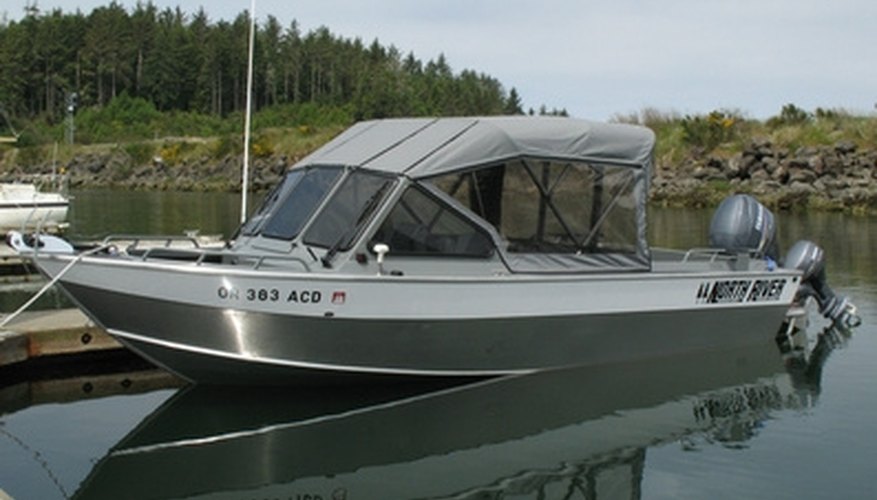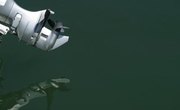
Outboard boats have an engine mounted to the outside of the boat via a transom. The transom is the flat back section on the rear of the boat that supports the outboard engine and typically has a pivot designed for the lifting and lowering of the motor. When docking the boat or heading into shallow waters, it is advisable to lift the motor partially or completely out of the water. Accomplish this manually or by using the boat's lift drive.
Manual Lift
Put the motor into neutral. If the boat has the speed control along the steering area, push the throttle to the neutral position. If the motor has the speed control on a shaft sticking out from the motor, turn the handle to the neutral setting.
Step to the side of the motor at the rear end of the boat. Locate the motor's lift handle, typically found at the back bottom of the motor cowling. The cowling is the engine cover.
Grip the lift handle and place your leg against the transom as a brace. Lift the handle up and back toward you. The engine lifts via a pivot attached to the transom, and the lift handle is placed in a position to use mechanical advantage when lifting the heavy motor up and out of the water.
Set the lock bar to hold the motor up and out of the water. The lock bar is typically found under the pivot, near the top of the transom mounting bracket. Push the lever so the engine stays upright and out of the water.
Power Lift Assist
Place the motor in neutral. Most outboard boats that use power lifts are steering wheel boats. Look for a button or lever on the control panel marked as the lift or "trim."
Press the button or lever and check that the engine slowly lifts from the water. Listen for a high-pitched whine. This is the power lift engine.
Release the button when the motor is up and out of the water.
References
Writer Bio
A former Alaskan of 20 years, Eric Cedric now resides in California. He's published in "Outside" and "Backpacker" and has written a book on life in small-town Alaska, "North by Southeast." Cedric was a professional mountain guide and backcountry expedition leader for 18 years. He worked in Russia, Iceland, Greece, Turkey and Belize. Cedric attended Syracuse University and is a private pilot.



